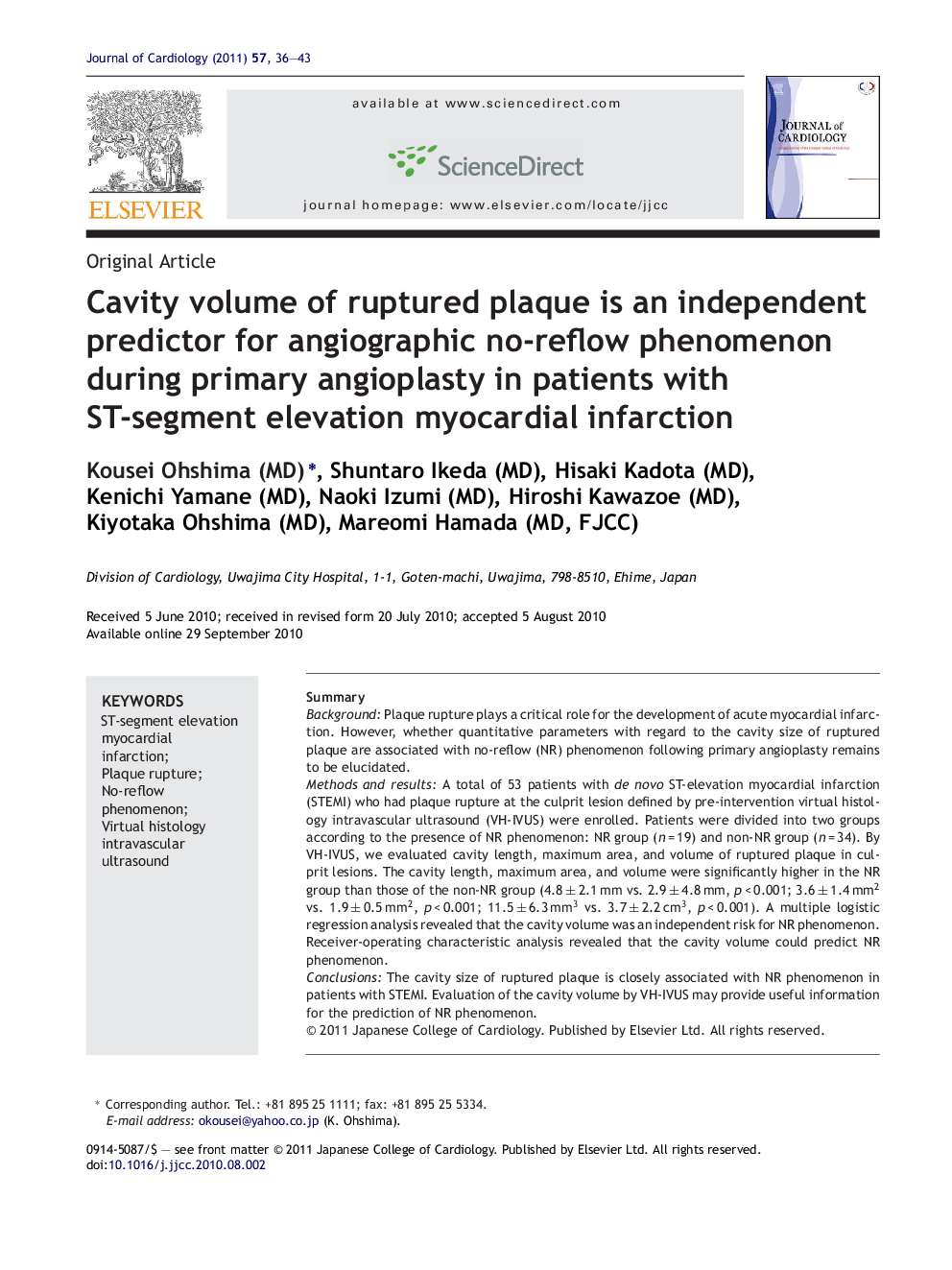| Article ID | Journal | Published Year | Pages | File Type |
|---|---|---|---|---|
| 2963451 | Journal of Cardiology | 2011 | 8 Pages |
SummaryBackgroundPlaque rupture plays a critical role for the development of acute myocardial infarction. However, whether quantitative parameters with regard to the cavity size of ruptured plaque are associated with no-reflow (NR) phenomenon following primary angioplasty remains to be elucidated.Methods and resultsA total of 53 patients with de novo ST-elevation myocardial infarction (STEMI) who had plaque rupture at the culprit lesion defined by pre-intervention virtual histology intravascular ultrasound (VH-IVUS) were enrolled. Patients were divided into two groups according to the presence of NR phenomenon: NR group (n = 19) and non-NR group (n = 34). By VH-IVUS, we evaluated cavity length, maximum area, and volume of ruptured plaque in culprit lesions. The cavity length, maximum area, and volume were significantly higher in the NR group than those of the non-NR group (4.8 ± 2.1 mm vs. 2.9 ± 4.8 mm, p < 0.001; 3.6 ± 1.4 mm2 vs. 1.9 ± 0.5 mm2, p < 0.001; 11.5 ± 6.3 mm3 vs. 3.7 ± 2.2 cm3, p < 0.001). A multiple logistic regression analysis revealed that the cavity volume was an independent risk for NR phenomenon. Receiver-operating characteristic analysis revealed that the cavity volume could predict NR phenomenon.ConclusionsThe cavity size of ruptured plaque is closely associated with NR phenomenon in patients with STEMI. Evaluation of the cavity volume by VH-IVUS may provide useful information for the prediction of NR phenomenon.
